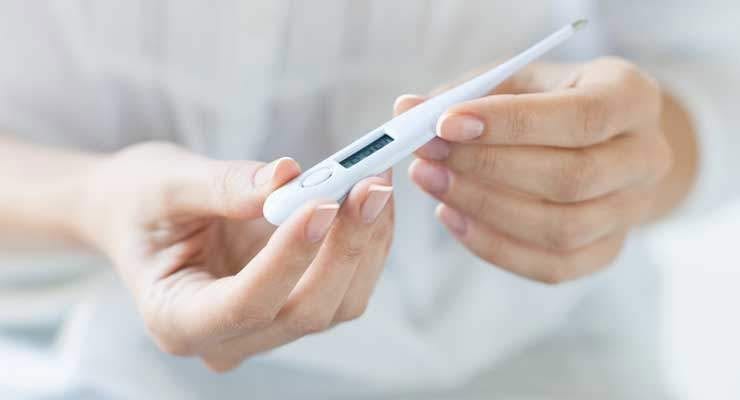If your baby coughs and sneezes, he may have a cold. If your baby feels warm to touch, he could have a fever. Or does he? This article provides general guidelines about normal body temperature for an infant, potential causes of a fever, how to take a baby’s temperature and steps to take if your baby has a fever.
What Is Normal Body Temperature for an Infant?
Body temperatures fluctuate depending on the person and the time of day. The normal body temperature for an infant is no different. According to the American Academy of Pediatrics, normal body temperature for a health baby ranges between 97 degrees and 100.4 degrees Fahrenheit (36 degrees to 38 degrees Celsius). A rectal temperature reading above this range indicates a fever.
What Is a Fever?
Our brains contain a “thermostat” that regulates the body temperature to approximately 98.6 degrees Fahrenheit, or 37 degrees Celsius. When we get sick, the thermostat resets and elevates the body temperature to fight what’s causing the sickness, giving us a fever. A fever itself is not an illness but rather a symptom of an underlying cause. Despite the accompanying discomfort, fevers up to a certain temperature are good because they are the body’s way of letting us know it’s fighting an infection.
Causes
A fever has many possible causes. The primary cause is infection. Babies sometimes react to vaccinations by developing a low-grade fever. Infants and newborns can spike fevers if they are overdressed or overheated because their bodies don’t yet have the ability to regulate body temperature as well as older kids. Most experts agree that teething itself cannot be blamed for a high fever, although your child may develop a low-grade fever the day the tooth pops through the gum.
Does My Baby Have a Fever?
Parental instinct is often the first step. Feeling your baby’s forehead for warmth can tell you if her temperature is elevated. But the nurse at the doctor’s office will ask for a specific temperature, so you’ll need to take your baby’s temperature beforehand. Obtain the most accurate temperature reading in children three months or younger by using a rectal thermometer. Most new parents cringe at the idea of taking a baby’s temperature rectally, but the steps are relatively simple: Lubricate the thermometer’s tip with petroleum jelly. Place the baby in one of two positions: belly down on your lap with one hand across the lower back, or face up on a bed or changing table with legs bent to the chest. With your free hand insert the lubricated tip into the rectal opening about half an inch to 1 inch, stopping if you feel resistance. Firmly but gently cup your baby’s buttocks and hold the thermometer still. If the thermometer is digital, remove it when it beeps and read your baby’s temperature. Rinse the thermometer with warm soapy water and rubbing alcohol.
What if My Baby Has a Fever?
Contact your doctor immediately if your child is less than three months old and has a temperature of 100.4 degrees Fahrenheit or above. If your child is older than three months with a fever of 102.2 degrees, call the doctor to inquire if she should be seen. In many cases fevers do not require treatment except to relieve discomfort.
What Is the Normal Body Temperature for an Infant?






